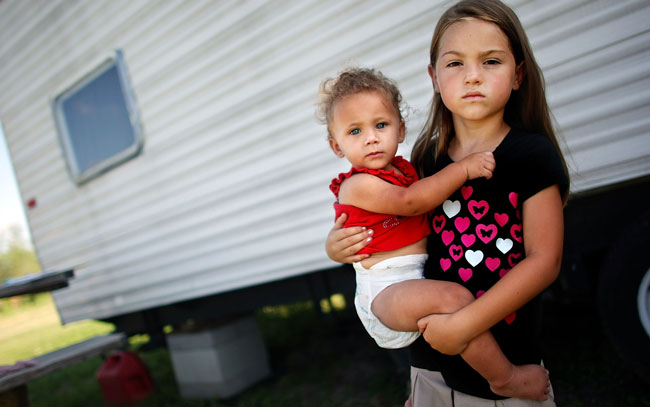"When you went downtown, did you see a hobo?" The tone was mocking with a giggle at the end.
I cringed. Turning around, I saw one of my students: a young girl with freckles and a polka dot bow in her hair. She was a student who always had a smile to share, was the first to offer an extra pencil if anyone lacked and was always willing to help others. The callousness of her remark was out of character. I wondered if she was repeating something that someone else had said. Perhaps she just thought hobo was a funny word.
To some, thoughts of the homeless bring up stereotypical images seen in movies or on TV, but many, including my young student, don't realize that the number of homeless people under the age of 18 is increasing. The Covenant House, a nonprofit organization in Atlanta for homeless youth, reports that about 40 percent of the homeless population are youth. Many of them are running from abuse or neglect.

Mario Tama/Getty Images
I want to cultivate true compassion among my students. In Latin, compassion means “to bear with" or "to suffer with.” My students can’t be made to experience days and nights of exposure to the elements or lack of sufficient food. But, I can encourage them to see from the perspective of someone who has experienced these things. How do you think a family becomes homeless? What would it be like? How would it be hard for a family who is homeless to rise out of that situation?
Fortuitously, my student made her comment just as we began to study Charles Dickens’ A Christmas Carol, a story that focuses on being more compassionate towards the poor and homeless. It was the perfect backdrop to a discussion about homeless stereotypes.
I am not naïve enough to think that one literature unit can completely transform my students' attitudes toward the less fortunate. However, I do believe that empathy can start with one question, which most certainly will lead to another. We must get our students thinking. Then, they will realize you cannot view people as just stereotypes. Start the conversation with one of these Teaching Tolerance activities: Using Photographs to Teach Social Justice: Exposing Homelessness and Poverty or Poetry for Home: Homelessness.
A Christmas Carol didn’t provoke a mass pledge from my students to treat the poor with more compassion and humanity, but one young girl in the back spoke up: “I never thought of it that way before.” Then, she was just quiet. In fact, the whole class was quiet. The student, known for her goofy antics, at that moment, seemed transformed—her features softer, more thoughtful, dare I say—more compassionate.
Sansbury is a middle and high school English teacher in Georgia.

0 COMMENTS